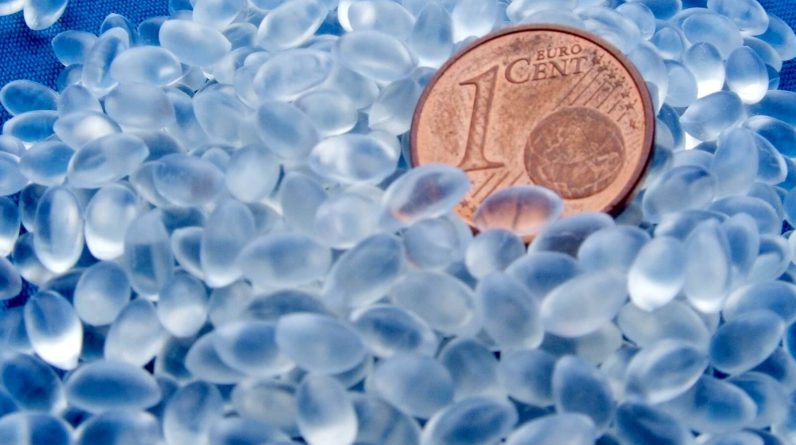
You’ve heard of plastics, right? They’re that family of interesting substances that are as useful as they are unassuming. But, there’s also this other type of material that you may have not heard of before.
In truth, it’s not as glaringly obvious as plastic. This is especially true if you’re out and about. Some of the best examples of polymers are the synthetic fibers used for clothing.
Still, there’s a whole lot more when it comes to the world of polymers. If you’d like a closer look, then read on. We’re going to take a look at the different types of polymers and how they’re made.
Thermoplastics
Thermoplastics are a form of nylon polymers melted and remolded without losing any of their original qualities. Because of their versatility in terms of shapes and sizes, they are a well-liked option for production. Examples of thermoplastics include polyethylene, polypropylene, and PVC.
Thermoplastics are widely used in various industries. For instance, you can find polyethylene in plastic bags, while PVC is used in pipes and window frames. Polypropylene is used in packaging, automotive parts, and textiles.
See how it is used in peek tubing here. This is for high-pressure liquid chromatography systems. These thermoplastics are not only versatile but also cost-effective.
Thermosets
Unlike thermoplastics, thermosets cannot be melted or remolded. Once they are formed, they are set in place and cannot be changed. However, this also means that they are more heat-resistant and durable than thermoplastics. Examples of thermosets include epoxy resins and phenolic resins.
Thermosets are often used in high-temperature applications because of their resistance to heat. Epoxy resins are used in adhesives, coatings, and composites.
Meanwhile, phenolic resins are used in laminates and molded products. These materials are also highly resistant to chemicals. They can be used in harsh environments.
Elastomers
Elastomers are polymers that are able to stretch. Then, they return to their original shape without being permanently deformed.
They are commonly used in applications that require flexibility and shock absorption. These include tires, rubber bands, and shoe soles. Examples of elastomers include natural rubber and silicone rubber.
Elastomers are important in various industries. For example, natural rubber is used in the production of tires. Meanwhile, silicone rubber is used in medical devices and household items. These materials have a wide range of properties. This includes heat resistance, flexibility, and strength.
Composites
Composites are polymers reinforced with other materials to improve their strength and durability. Fiberglass is a composite material made up of glass fibers embedded in a polymer matrix. Other examples include carbon fiber-reinforced polymers (CFRPs) and ceramic matrix composites (CMCs).
Composites are used in industries that require high-performance materials. These include aerospace, automotive, and construction. They are lightweight and have high strength. This makes them ideal for applications where weight reduction is important.
Biopolymers
Biopolymers are polymers that are derived from natural sources, such as plants or animals. They are often biodegradable and can be more environmentally friendly than synthetic polymers. Examples of biopolymers include cellulose, starch, and chitin.
Biopolymers are becoming increasingly important as companies strive to become more sustainable. These materials have a wide range of applications, from packaging to textiles to biomedical implants. They can also be used as renewable energy sources.
Conductive Polymers
Conductive polymers are a type of polymer that has the ability to conduct electricity. These materials have a wide range of applications, from electronic devices to energy storage. Examples of conductive polymers include polyaniline, polypyrrole, and polythiophene.
Conductive polymers are being developed for use in flexible electronic devices, such as wearable technology and flexible displays. They are also being researched for use in energy storage applications. These are batteries and supercapacitors.
Liquid Crystalline Polymers
Liquid crystalline polymers (LCPs) are a type of polymer that exhibit unique properties due to their ordered structure. They have high strength and stiffness.
They also have the ability to align themselves in specific directions. This makes them useful in applications such as electronic displays and optical devices.
LCPs are also developed for use in the aerospace industry due to their high strength and heat resistance. They have the potential to be lightweight, high-performance materials for aircraft and spacecraft.
Shape Memory Polymers
Shape memory polymers (SMPs) are a type of polymer that can change shape in response to temperature or other stimuli.
They can be programed to remember a specific shape and then return to that shape when heated or exposed to another stimulus. This makes them useful in applications such as medical implants and aerospace components.
SMPs are being researched for use in drug delivery systems. They can be programed to release drugs at specific times or in response to specific conditions. They are also developed for use in soft robotics. This is where their shape memory properties are used to create self-assembling structures.
Conductive Polymer Composites
Conductive polymer composites (CPCs) are a type of composite material. It combines the properties of conductive polymers with other materials to create materials with unique properties. For example, adding carbon nanotubes to a polymer matrix creates a material with high conductivity and strength.
CPCs are being developed for use in a wide range of applications, from electronic devices to structural materials. They have the potential to be lightweight, high-performance materials for aerospace and automotive applications.
Polymer Blends
Polymer blends are a type of polymer that combines two or more different polymers to create a material with unique properties. For example, blending a thermoplastic with an elastomer can create a material that is both flexible and strong.
Polymer blends are being developed for use in a wide range of applications, from packaging to automotive components. They have the potential to be used in materials that are both lightweight and strong, making them ideal for use in applications where weight reduction is important.
Understanding the Different Types of Polymers Today
Today, there is a vast range of polymer types used in a variety of industries. From plastics and rubbers to biodegradable polymers and electrically conductive polymers. Their applications are extremely varied.
Further research into these different types of polymers. It can help to identify the most appropriate type for numerous applications.
Check out our page to learn more tips!






